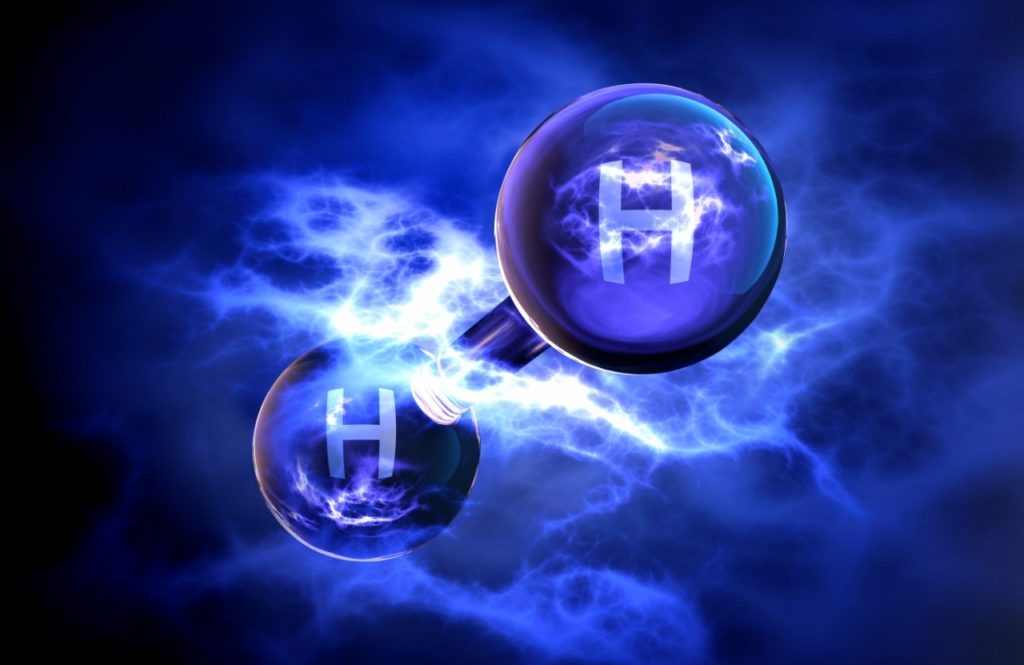Application Focus - Transformed Knockout Bacteria as a Platform for H2 Production
By George Kamphaus, Ph. D.
 Hydrogen fuel cells are already used as “clean” energy sources. Hydrogen can be produced using a number of different processes: Thermochemical processes that use organic materials, Electrolytic and Photolytic processes that split water (H2O) into hydrogen (H2) and oxygen (O2), and a more recently introduced method in which microorganisms such as bacteria and algae can produce hydrogen through biological processes. This blog discusses the use of genetically modified purple non-sulfur photosynthetic bacterium Rubrivivax gelatinosus CBS as a new platform for biological H2 production developed by C. Eckert, et al. at the National Renewable Energy Center and the University of Colorado.
Hydrogen fuel cells are already used as “clean” energy sources. Hydrogen can be produced using a number of different processes: Thermochemical processes that use organic materials, Electrolytic and Photolytic processes that split water (H2O) into hydrogen (H2) and oxygen (O2), and a more recently introduced method in which microorganisms such as bacteria and algae can produce hydrogen through biological processes. This blog discusses the use of genetically modified purple non-sulfur photosynthetic bacterium Rubrivivax gelatinosus CBS as a new platform for biological H2 production developed by C. Eckert, et al. at the National Renewable Energy Center and the University of Colorado.
- Electroporation ready cells of CBS were made by growing cells photosynthetically in 14 ml RCVBN media with sodium malate to mid-logarithmic phase of growth (optical density [OD600] between 1 and 2). Cells were then harvested by centrifugation (6600 x g for 5 minutes), washed twice with cold ddH2O and resuspended in 1 ml of 10% glycerol. This suspension was separated into 80 μl aliquots and stored at -80°C.
- Cell aliquots (80 μl) were mixed with 1 g of the purified integration vectors in chilled 1 mm gap cuvettes (BTX Harvard Apparatus).
- The BTX ECM 630 was set to 2.0 kV, 200 Ω, 25 μF, and one pulse. Cuvettes were pulsed with a time constant of ~5 ms.
- Cells were diluted into 900 μl RCVBN media with sodium malate in a 2 ml microcentrifuge tube and were incubated in the dark on a nutator at 30°C. 100 μl of this outgrowth was plated onto agar plates of RCVBN media with sodium malate plus 50 μg/ml kanamycin and/or 100 μg/ml carbenicillin and incubated in the dark at 30°C.
- R. gelatinosus CBS, unlike related bacteria, can metabolize CO to produce H2 in a “water-gas shift” reaction (CO + H2O → H2 + CO2)
- Prior studies by these authors using transposon mutagenesis and whole genome sequencing have identified numerous putative genes involved in the CO oxidation reaction and CO-linked H2 production pathway as well as CO-sensing transcription factors.
- This 2019 report discovered two clusters of hyp maturation factors (hyp 1 and hyp 2) through homology comparison using the whole genome sequence. The hyp maturation factor proteins A – F are critical for the assembly of the complex multiunit hydrogenases in many microorganisms.
- This paper characterized the induction of the hyp1 and hyp2 genes in the presence of CO and or H2 and determined hyp1 factors were clearly induced in the presence of CO but not in the presence of H2.
- Addition of CO to the bacteria culture also induced the cooH gene, which encodes the catalytic subunit of the Ech (energy-converting hydrogenase). This indicates that the hyp1 genes are maturation factors involved in the Ech assembly. H2, independent of CO, was able to induce all hyp2 genes tested as well as membrane bound hydrogenase (MBH) gene hupB.
- While it is also true that CO addition also increased hyp2 and hupB transcripts, this is likely due to the production of H2 from CO metabolism. Taken together, this supports the conclusion that hyp2 factors are critical to the assembly (or maturation) of MBH hydrogenases.
- All mutant strains (hyp1 Δ , hyp2 Δ and hyp1/2 Δ) grew similarly to wild type following CO addition under photosynthetic, mixotrophic conditions in medium containing malate and yeast extract as additional carbon sources over the course of the 24 hour experiment, as determined by OD600 readings.
- Hyp2 Δ mutants were able to metabolize added CO at similar rates as wild-type cultures. Hyp1 Δ mutants showed slower metabolism of CO and hyp1/2 Δ double knockouts showed almost no CO metabolism indicating that the while hyp1 factors are likely maturation factors of the Ech hydrogenase complex. It is possible that the hyp2 factors can partially compensate for the hyp 1 factors that were deleted.
- While both wild-type and hyp1 Δ mutants produce H2 in response to added CO (peaks at 8 hours and 12 hours respectively) both of these cultures metabolized the H2, likely due to oxidation by the MBH hydrogenase to produce energy for the cell. The hyp1/2 Δ mutants showed no H2 production, while the hyp2Δ mutants produced levels of H2 nearly 3.5 times the peak of the wild-type cells and which was sustained for the duration of the experiment.
- To further test the theory that hyp2 genes are involved in H2 metabolism, H2 gas was injected into the “headspace” of cultures and the concentration of the gas was monitored for 24 hours. Both wild-type and hyp1Δ mutants depleted the H2 level to zero by 16 hours, while both the hyp2Δ and hyp1/2 Δ mutants showed limited hydrogen depletion.
- Western blot analysis of Ech hydrogenase apoprotein indicated no major differences in expression among the mutants compared to wild-type bacteria. This indicates that the observed changes in H2 production of hyp1Δ mutants at the 8 hour time point is likely due to delayed assembly of the CooH active site rescued by Hyp2 in the absence of Hyp1 proteins.
This group has identified and characterized two distinct clusters of hydrogenase maturation factor genes, hyp1 and hyp2. Their results indicate the hyp1 and hyp2 maturation factors have roles in assembly of different hydrogenase complexes. Using electroporation to create knockouts of the hyp2 gene cluster, Eckert, et al. have developed a system with the potential to create a renewable, environmentally cleaner energy source from CO, which is found in the waste streams of processes like steel production and municipal solid waste.
Reference:
1. Eckert, C. A., et al. (2019) Inactivation of the uptake hydrogenase in the purple non-sulfur photosynthetic bacterium Rubrivivax gelatinosus CBS enables a biological water–gas shift platform for H2 production. Journal of Industrial Microbiology and Biotechnology, 46(7), 993-1002.
Buy an ECM 830 Electroporation System, get a free BTXpress High Performance Electroporation Buffer—Click here for promotion details!



 800-272-2775
800-272-2775
